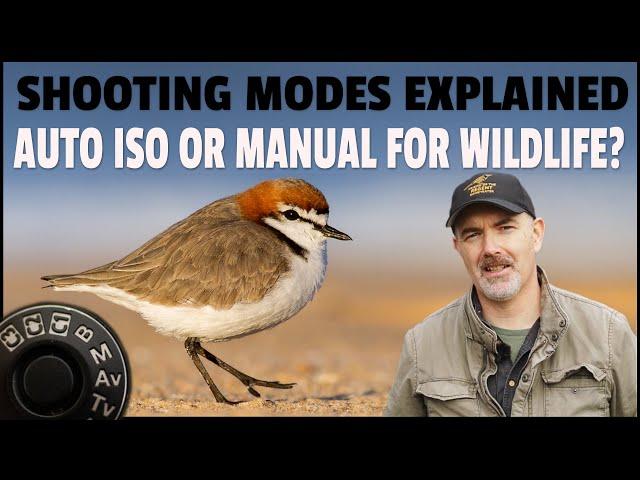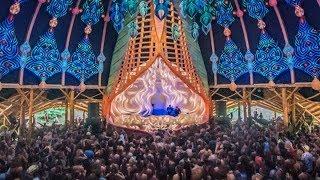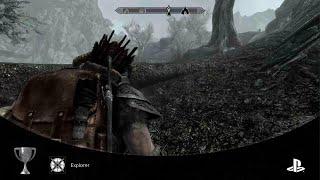
Bird Photography Shooting Modes Explained - Auto ISO or Manual, Does It Really Matter for Wildlife?
Комментарии:

Compliments for your videos. On my Fuji xh2s I programmed four setups availeble directly on the presets. Three for birds (shutter priority manual and aperture all three with subject bird recognition) and one for animals (shutter priority with subject animal recognition) . My lens is not so fast, the max aperture at 600mm is f8 so I found not so convenient to use aperture priority, because at the shutter speed normally used for birds you have to use almost every time the max aperture. So after many attempts, for moving birds, I normally use shutter priority with auto iso
Ответить
Thank you Duade, for a great presentation - for me your table for Scene Brightness was especially useful as a starter to work out wildlife shoot settings for my Sony A7RM4. I am a Sony's Auto ISO min SS feature fan, so I have set up Memory Recall 1,2,3 settings corresponding to Bright, Medium and Dark available light conditions.
Ответить
I just learned the hard way that the max shudder speed even with ISO up to 6400 requires basically perfect light or you get a dark mess. Shooting Hummingbirds at the feeders hanging from the trees is what landed me here.
What I’ve figured out is that for the frozen wing shots it’s not ever going to work without moving the feeders out into the sun. When I would go back to my normal settings all my pictures were sharp under the trees but the wings are just a blur.
I had given up the other afternoon and shot in full A, the flash kept popping up which confused me a lot since A uses a slow shutter and high ISO. It finally dawned on me that even though the light looks really great to me but even midday in August it’s too little for the camera or lens in the shade.
T7 with the Sigma 150-600

FLV mode on Canon. Set the shutter speed and aperture and it acts like auto ISO. Then use exposure compensation as necessary.
Ответить
I know this is an old video but I’m a lifelong photographer trying to get back into wildlife photography and your content is amazingly helpful, I love your humble and supportive attitude. Thank you, Duade!
Ответить
Duade, loved your blooper reel at the end. You put together incredibly well-shot and spoken content. Thank you so much for what you do.
Ответить
Do you have a place where you settings charts are available to download? I just purchased my first camera a lens to start wildlife photography and your videos are very helpful so far. I have a lot to learn.
Ответить
Thank you for simplifying what has always been a source of “fear” for me. I am ready to experiment.
Ответить
After 10 yrs of using auto ISO and dialing in shutter I'm trying to switch to manual. Think I just need practice. The problem I'm having is I'm mainly shooting bush birds, then a Heron or Eagle flies over head and I can't switch fast enough. Auto ISO I would have gotten the shot but something would be off in the auto exposure. I could use compensation, but then I'm back to I can't change it fast enough. Going from large mammals to birds is just all around hard, but I recently moved to New Mexico and there's way more opportunity for birds and way less for large mammals where I'm currently living.
Ответить
What I use most of time whooting birds is manual+auto ISO. But I have set the back dial that normally controls ISO to control exposure compensation so its very quick to change your exposure if you suddently have very dark or light background compared to your subject.
Ответить
👌👌❤❤👍👍
Ответить
I am shooting Manual with Auto ISO, but I had set my maximum ISO on the lower side. After watching this video I will increase the maximum ISO and follow your suggestions. Thanks.
Ответить
Lot of information. Thanks. I use manual +auto iso.
Ответить
For wildlife I use manual + auto ISO limited to the level before the noise gets to be too much to be recovered safely in lightroom, then reduce my shutter speed if I hit that, use spot or matrix metering depending on conditions. For landscape it's way less shutter speed dependent save for our heavy wind but I'll typically use ISO 100-250 and use a tripod if it gets too slow center weighted metering. I shoot northern lights regularly so I'll set my aperture to f/2-2.8, ISO to 300-600, focus on a distant object and tape my focus ring down, start with an 8" exposure and go progressively faster usually end up shooting 1.4"-3" exposures depending on how fast they're dancing center weighted. Always use auto white balance unless I'm shooting RAW+JPEG, for events and the like I'll set custom with a gray card with raws I just set white balance in post.
Ответить
I use Manual when the light is consistent or in shooting birds in flight. When light is frequently changing, I normally use auto ISO.
Ответить
first light and last light u mean golden hour ?
Ответить
Excellent summary!
Ответить
Thanks for the great explanation to all modes now need to try them
Ответить
Thanks!
Ответить
As an 'oldtimer' (used light meters in the '50's) I can really appreciate the detailed explanation of the variable settings on digital cameras. I feel that experimentation with the settings will be easier to accomplish now. Thanks for the video.
Ответить
These are awesome tips. Although, my problem is by the time I am done all this thinking, calculations abd setting, the bird has already flown to the next state! I do use manual mode and many a times with Auto ISO. Thev trouble comes when the bird is perched on a lower branch of a thick tree, in a dark spot, and ISO jumps to, say, 8K. Now I have to deal with whole lot of noise in dark shadows.
Ответить
Hi Duade! Thanks for your amazing vids! What’s your take on the entire screen metering on Sony?
Ответить
Duade, LOve your videos, speaking at my level, thank you so much. Is there somewhere I can get a copy of the charts you are using in these videos? Thanks in advance, DK
Ответить
Such a clear explanation. Thank you!
Ответить
Great video I always use Manual mode with auto iso I’m in the UK so the light is very in and out ,I had a massive argument with a friend who insisted that you could not use Manual mode with auto iso on the 1dx m11 that I had just sold him (I moved to the r5) I will share this video with him lol
Ответить
I am very Impressed with your knowledge and how you articulate. They have so much great information, thank you for your time and passion that you put into you videos.
Ответить
Duade. So when your in manual mode. If you're over or underexposed to change that, would you alter iso, aperture and or shutter speed? In order to gain a correct exposure.
Because when I'm in AV or TV I have the ability too move the exposure compensation up or down on the LCD on the back of the camera. Thank you in advance if you can help.

Hi Great video I usually try and stay in manual mode. Its fun to play around with various options its the only way to learn the camera fully.
Ответить
Manual mode and spot metering work very well for everything I shoot...
Wildlife, Architecture and Landscapes. Evaluative metering is good for a percentage of everyday personal shooting, but there are limitations. In aperture value mode, you choose the Fstop and the camera automatically selects the shutter speed. Exposure compensation adjustments are made with the command dial on the back of Canon cameras to make the image lighter or darker than suggested by the camera.
On the other hand an overcast day with flat lighting evaluative metering works fine, sometimes with little to no compensation required.
This is a very reliable and efficient mode in many cases, but when your subjects are moving around or there is a lot of tonal values, significant exposure errors can occur. Incorrect exposures in AUTO modes occur when your subject moves in front of backgrounds of varying lightness or darkness. The camera will vary the exposure depending on the background, and this can lead to exposures way off the mark.
For example, using evaluative metering, a bird on the ground may be exposed perfectly in its surroundings, however, when that same bird suddenly flies into the sky, it may be rendered nearly a silhouette, because the bright sky fools the metering system into underexposure. We must be a bit smarter in these situations. Even zooming your lens can change the exposure, even when the light is not changing. By using exposure lock * hold when using any automatic camera modes or shooting manually and spot metering is two useful camera settings to control your exposure.
Lets say you have a dark bison standing in a grassy meadow and you have a zoom lens on your camera. At the wider setting the dark toned bison is a relatively small percentage of the scene and evaluative metering may be right on, however if you zoom way in on just the bison, now the camera is seeing a completely different scene, and metering very differently. Now the bison is big in the frame, the meter reads a lot of dark tones from the bison, and gets fooled into overexposing the bison. The light did not change as I zoomed, but the in camera meter read the exposure differently as the zoom added or subtracted tonal values.
To avoid these potential pitfalls, use manual mode in conjunction with the in camera spot meter. In manual mode you must set the aperture and the desired shutter speed for correct exposure at your chosen i.s.o.. The great benefit is that once exposure is set correctly using your RGB histogram, it can’t move until you tell the camera to do so. It’s so simple, but the benefits are huge.

I wish I had come across this great explanation years ago! Thank You!
Ответить
Thank you Duade, I learn so much your video..
Ответить
just discovered your website and it has been a big inspiration , i gave up bird photography because i was not getting the results and sold my gear but i have decided to go back to it and learn properly , i always wanted to run before i could walk , thanks once again and keep up the great work
Ответить
Hi fantastic videos and love the outtakes
Ответить
I shoot manual plus auto iso.
Ответить
I have an R6. I am a bit confused about setting exposure. Will the exposure compensation setting stick if the camera drops out of metering mode between shots?
Ответить
Worth watching ❤
Ответить
I, personally shoot exclusively in manual mode. You are 100% correct that when shooting in this mode almost every single shot has to be adjusted, especially when i go with the floating-hide. Thank you very much for the tutorial
Ответить
If you are in manual with auto iso mode, and you adjust exposure using exposure compensation, what parameter does the camera adjust to change the exposure? ISO?
Ответить
as a beginner ..this is the best video i have ever learned..
Ответить
How do change the spot meetering to work with focus points on a Canon Camera? I can't find this function
Ответить
Great video! I learned photography on match-needle body (Minolta SRT201). Neither aperture priority or shutter priority has ever felt right to me since my training was to have deliberate control over both. It wasn’t until I got a mirrorless (Sony A6000) capable of auto-ISO in manual mode that I finally felt home again—in full control of the most critical parameters. Auto-ISO feels like being able to use a different film for each exposure as needed. With the mirrorless body I can check the ISO and history and change aperture or shutter speed if needed before each shutter click.
I have an older mirrorless body (Sony NEX6) that doesn’t allow auto-ISO in manual mode. I’ve tried using auto-ISO with aperture priority on that camera, but then I feel a loss of control as the shutter speed and ISO are both floating independently. So on that camera I’d always use aperture priority with a fixed ISO, then would adjust the ISO if the shutter speed wasn’t ideal. But then I still might need to adjust the exposure compensation, which with complicated things further. For static subjects is was easier to go back to fully manual mode.

Thanks 😊
Ответить
Great one dude. If U can please give me one raw each from 5D Mark iv, R6 and R5 please.
Ответить
Great video Duade, I prefer the manual + iso auto mode, but when I get high ISO I try with lower shutter speed (especially when I'm with a tripod) to get a less noise photo.
Best regards from Chile.

Thank you sir very helpful
Ответить
Thank you for your videos> I really enjoy them. I've always shot in aperture priority mode but I think I'll try manual.
Ответить
Excellent video, will be sharing it with some of my newer photography friends. You explained the "why" and "how" extremely well for each mode. Manual + Auto ISO is fantastic for wildlife, particularly when learning the basics. Also loved the bloopers haha
Ответить
Love your videos they are really well done. Im kinda new to all this and just started to pick this hobby up again.-
On my Canon 90D paired with a Sigma 150-600C, Auto ISO is often way to bright because it favors a very high ISO very fast.
I started with the auto white balance and set it on a mode for the scene (sunny, overcast, shadows etc) instead of leaving it on auto. That helped a lot.
But taking my time and reading the camera reading information / histograms helped me finetune that even more.
I like the manual mode the most although it can be very overwhelming. Although many of my images are still rubbish it helps me to understand what is happening and what the results are when I change settings myself. The good pictures will come later. First I need to learn the basics with this body I guess. Adapting settings on the fly when scenes changing out there (or in my case, birds flying away) it is very important for me to learn this.
Your videos do help a lot 👏

Thanks for sharing another great video and comments... I still have problems with dark pics unless I am really close to subject... I have a D500 & constantly have to use the compensation button to increase exposure... Although only a hobbyist I still want to get it right...cheers..
Ответить

























